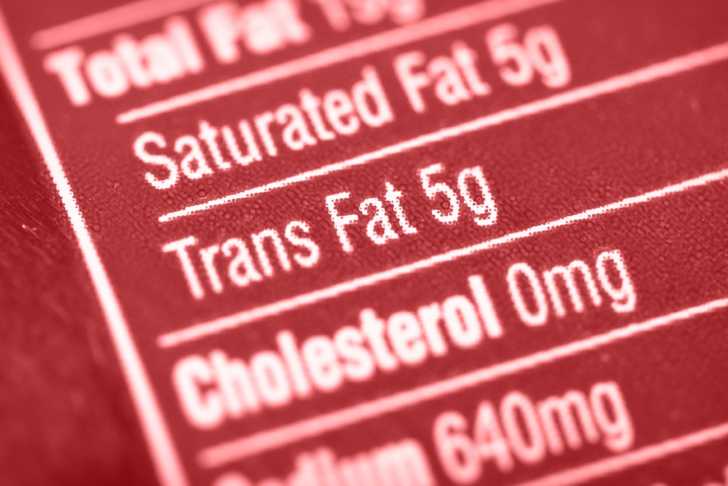3. Watch Saturated Fat Intake
Due to the handling of excess saturated fat by the liver (the liver turns it into cholesterol, causing higher blood cholesterol levels), the American Heart Association (AHA) recommends limiting saturated fat intake to 4–6% of total calories (or 11–13 grams of saturated fat in a 2000 calorie per day diet).
Most dietary saturated fat comes from animal products, mainly poultry with skin, red meat, lamb, cheese, and whole milk and high-fat dairy products like butter. Plant sources of saturated fat include coconut, coconut oil, palm oil, and palm kernel oil.
4. Watch Trans Fat Intake

Adding hydrogen to unsaturated vegetable oil creates a more solid fat – trans fat. We see this on a packed food label as “partially hydrogenated oil”. This type of fat extends shelf life compared to other fats. Like saturated fats, eating too much trans fat raises the bad LDL cholesterol and lowers the good HDL cholesterol.
The AHA’s recommendation for trans fat is the same as saturated fat: limit to 5–6% of total calories if you need to lower your LDL levels (or 11–13 grams of saturated fat in a 2000 calorie per day diet. Foods higher in trans fat include: pastries, biscuits, muffins, cakes, pie crusts, doughnuts, cookies, french fries, fried chicken, breaded chicken nuggets, breaded fish, microwave popcorn, crackers, stick margarine, and vegetable shortening.
Limiting trans fat intake should become effortless this year. In 2015, the Food and Drug Administration (FDA) removed trans fats from the list of foods that are “Generally Recognized As Safe” (also known as GRAS). The FDA gave food companies three years to comply with this.
5. Move

Aiming for 30 minutes of activity per day can help lower the bad LDL cholesterol and improve the good HDL cholesterol.
It does not need to be strenuous exercise to get the heart health benefit – walking regularly improves cholesterol levels. However, when duration or intensity is increased, the improvements in cholesterol will be even greater.
[Related: Tips for Boosting Your Exercise for Disease Prevention
When Should You Have Your Cholesterol Checked?
Heart disease (stroke, hypertension, coronary heart disease, heart attacks) is the number one cause of death in the United States. Half of American adults have cholesterol levels over the recommended maximum of 200 mg/dL, and nearly one in three have high LDL cholesterol. Monitoring and prevention are crucial in tackling high cholesterol and optimizing heart health. The American Heart Association recommends cholesterol checks starting at age 20 and occurring every four to six years.
Meaghan Ormsby, MS, RD is a private practice dietitian in Seattle, WA.













